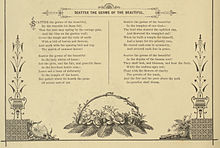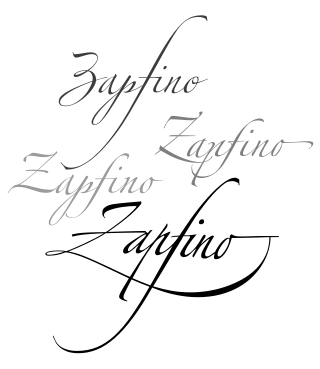| Code | Result | Description |
|---|
| U+2700 | ✀ | Black safety scissors |
| U+2701 | ✁ | Upper blade scissors |
| U+2702 | ✂ | Black scissors |
| U+2703 | ✃ | Lower blade scissors |
| U+2704 | ✄ | White scissors |
| U+2705 | ✅ | White heavy check mark |
| U+2706 | ✆ | Telephone location sign |
| U+2707 | ✇ | Tape drive |
| U+2708 | ✈ | Airplane |
| U+2709 | ✉ | Envelope |
| U+270A | ✊ | Raised fist |
| U+270B | ✋ | Raised hand |
| U+270C | ✌ | Victory hand |
| U+270D | ✍ | Writing hand |
| U+270E | ✎ | Lower right pencil |
| U+270F | ✏ | Pencil |
| U+2710 | ✐ | Upper right pencil |
| U+2711 | ✑ | White nib |
| U+2712 | ✒ | Black nib |
| U+2713 | ✓ | Check mark |
| U+2714 | ✔ | Heavy check mark |
| U+2715 | ✕ | Multiplication X |
| U+2716 | ✖ | Heavy multiplication X |
| U+2717 | ✗ | Ballot X |
| U+2718 | ✘ | Heavy ballot X |
| U+2719 | ✙ | Outlined Greek cross |
| U+271A | ✚ | Heavy Greek cross |
| U+271B | ✛ | Open center cross |
| U+271C | ✜ | Heavy open center cross |
| U+271D | ✝ | Latin cross |
| U+271E | ✞ | Shadowed white Latin cross |
| U+271F | ✟ | Outlined Latin cross |
| U+2720 | ✠ | Maltese cross |
| U+2721 | ✡ | Star of David |
| U+2722 | ✢ | Four teardrop-spoked asterisk |
| U+2723 | ✣ | Four balloon-spoked asterisk |
| U+2724 | ✤ | Heavy four balloon-spoked asterisk |
| U+2725 | ✥ | Four club-spoked asterisk |
| U+2726 | ✦ | Black four-pointed star |
| U+2727 | ✧ | White four-pointed star |
| U+2728 | ✨ | Sparkles |
| U+2729 | ✩ | Stress outlined white star |
| U+272A | ✪ | Circled white star |
| U+272B | ✫ | Open center black star |
| U+272C | ✬ | Black center white star |
| U+272D | ✭ | Outlined black star |
| U+272E | ✮ | Heavy outlined black star |
| U+272F | ✯ | Pinwheel star |
| U+2730 | ✰ | Shadowed white star |
| U+2731 | ✱ | Heavy asterisk |
| U+2732 | ✲ | Open center asterisk |
| U+2733 | ✳ | Eight spoked asterisk |
| U+2734 | ✴ | Eight pointed black star |
| U+2735 | ✵ | Eight pointed pinwheel star |
| U+2736 | ✶ | Six pointed black star |
| U+2737 | ✷ | Eight pointed rectilinear black star |
| U+2738 | ✸ | Heavy eight pointed rectilinear black star |
| U+2739 | ✹ | Twelve pointed black star |
| U+273A | ✺ | Sixteen pointed asterisk |
| U+273B | ✻ | Teardrop spoked asterisk |
| U+273C | ✼ | Open center teardrop spoked asterisk |
| U+273D | ✽ | Heavy teardrop spoked asterisk |
| U+273E | ✾ | Six petalled black and white florette |
| U+273F | ✿ | Black florette |
| U+2740 | ❀ | White florette |
| U+2741 | ❁ | Eight petalled outlined black florette |
| U+2742 | ❂ | Circled open center eight pointed star |
| U+2743 | ❃ | Heavy teardrop spoked pinwheel asterisk |
| U+2744 | ❄ | Snowflake |
| U+2745 | ❅ | Tight trifoliate snowflake |
| U+2746 | ❆ | Heavy chevron snowflake |
| U+2747 | ❇ | Sparkle |
| U+2748 | ❈ | Heavy sparkle |
| U+2749 | ❉ | Balloon spoked asterisk |
| U+274A | ❊ | Eight teardrop spoked propeller asterisk |
| U+274B | ❋ | Heavy eight teardrop spoked propeller asterisk |
| U+274C | ❌ | Cross mark |
| U+274D | ❍ | Shadowed white circle |
| U+274E | ❎ | Negative squared cross mark |
| U+274F | ❏ | Lower right drop-shadowed white square |
| U+2750 | ❐ | Upper right drop-shadowed white square |
| U+2751 | ❑ | Lower right shadowed white square |
| U+2752 | ❒ | Upper right shadowed white square |
| U+2753 | ❓ | Black question mark ornament |
| U+2754 | ❔ | White question mark ornament |
| U+2755 | ❕ | White exclamation mark ornament |
| U+2756 | ❖ | Black diamond minus white X |
| U+2757 | ❗ | Heavy exclamation mark symbol |
| U+2758 | ❘ | Light vertical bar |
| U+2759 | ❙ | Medium vertical bar |
| U+275A | ❚ | Heavy vertical bar |
| U+275B | ❛ | Heavy single turned comma quotation mark ornament |
| U+275C | ❜ | Heavy single comma quotation mark ornament |
| U+275D | ❝ | Heavy double turned comma quotation mark ornament |
| U+275E | ❞ | Heavy double comma quotation mark ornament |
| U+275F | ❜ | Heavy low single comma quotation mark ornament |
| U+2760 | ❞ | Heavy low double comma quotation mark ornament |
| U+2761 | ❡ | Curved stem paragraph sign ornament |
| U+2762 | ❢ | Heavy exclamation mark ornament |
| U+2763 | ❣ | Heavy heart exclamation mark ornament |
| U+2764 | ❤ | Heavy black heart |
| U+2765 | ❥ | Rotated heavy black heart bullet |
| U+2766 | ❦ | Floral heart |
| U+2767 | ❧ | Rotated floral heart bullet |
| U+2768 | ❨ | Medium left parenthesis ornament |
| U+2769 | ❩ | Medium right parenthesis ornament |
| U+276A | ❪ | Medium flattened left parenthesis ornament |
| U+276B | ❫ | Medium flattened right parenthesis ornament |
| U+276C | ❬ | Medium left-pointing angle bracket ornament |
| U+276D | ❭ | Medium right-pointing angle bracket ornament |
| U+276E | ❮ | Heavy left-pointing angle quotation mark ornament |
| U+276F | ❯ | Heavy right-pointing angle quotation mark ornament |
| U+2770 | ❰ | Heavy left-pointing angle bracket ornament |
| U+2771 | ❱ | Heavy right-pointing angle bracket ornament |
| U+2772 | ❲ | Light left tortoise shell bracket ornament |
| U+2773 | ❳ | Light right tortoise shell bracket ornament |
| U+2774 | ❴ | Medium left curly bracket ornament |
| U+2775 | ❵ | Medium left curly bracket ornament |
| U+2776 | ❶ | Dingbat negative circled digit one |
| U+2777 | ❷ | Dingbat negative circled digit two |
| U+2778 | ❸ | Dingbat negative circled digit three |
| U+2779 | ❹ | Dingbat negative circled digit four |
| U+277A | ❺ | Dingbat negative circled digit five |
| U+277B | ❻ | Dingbat negative circled digit six |
| U+277C | ❼ | Dingbat negative circled digit seven |
| U+277D | ❽ | Dingbat negative circled digit eight |
| U+277E | ❾ | Dingbat negative circled digit nine |
| U+277F | ❿ | Dingbat negative circled digit ten |
| U+2780 | ➀ | Dingbat circled sans-serif digit one |
| U+2781 | ➁ | Dingbat circled sans-serif digit two |
| U+2782 | ➂ | Dingbat circled sans-serif digit three |
| U+2783 | ➃ | Dingbat circled sans-serif digit four |
| U+2784 | ➄ | Dingbat circled sans-serif digit five |
| U+2785 | ➅ | Dingbat circled sans-serif digit six |
| U+2786 | ➆ | Dingbat circled sans-serif digit seven |
| U+2787 | ➇ | Dingbat circled sans-serif digit eight |
| U+2788 | ➈ | Dingbat circled sans-serif digit nine |
| U+2789 | ➉ | Dingbat circled sans-serif digit ten |
| U+278A | ➊ | Dingbat negative circled sans-serif digit one |
| U+278B | ➋ | Dingbat negative circled sans-serif digit two |
| U+278C | ➌ | Dingbat negative circled sans-serif digit three |
| U+278D | ➍ | Dingbat negative circled sans-serif digit four |
| U+278E | ➎ | Dingbat negative circled sans-serif digit five |
| U+278F | ➏ | Dingbat negative circled sans-serif digit six |
| U+2790 | ➐ | Dingbat negative circled sans-serif digit seven |
| U+2791 | ➑ | Dingbat negative circled sans-serif digit eight |
| U+2792 | ➒ | Dingbat negative circled sans-serif digit nine |
| U+2793 | ➓ | Dingbat negative circled sans-serif digit ten |
| U+2794 | ➔ | Heavy wide-headed rightward arrow |
| U+2795 | ➕ | Heavy plus sign |
| U+2796 | ➖ | Heavy minus sign |
| U+2797 | ➗ | Heavy division sign |
| U+2798 | ➘ | Heavy south east arrow |
| U+2799 | ➙ | Heavy rightward arrow |
| U+279A | ➚ | Heavy north east arrow |
| U+279B | ➛ | Drafting point rightward arrow |
| U+279C | ➜ | Heavy round-tipped rightward arrow |
| U+279D | ➝ | Triangle-headed rightward arrow |
| U+279E | ➞ | Heavy triangle-headed rightward arrow |
| U+279F | ➟ | Dashed triangle-headed rightward arrow |
| U+27A0 | ➠ | Heavy dashed triangle-headed rightward arrow |
| U+27A1 | ➡ | Black rightward arrow |
| U+27A2 | ➢ | Three-D top-lighted rightward arrowhead |
| U+27A3 | ➣ | Three-D bottom-lighted rightward arrowhead |
| U+27A4 | ➤ | Black rightward arrowhead |
| U+27A5 | ➥ | Heavy black curved downward and rightward arrow |
| U+27A6 | ➦ | Heavy black curved upward and rightward arrow |
| U+27A7 | ➧ | Squat black rightward arrow |
| U+27A8 | ➨ | Heavy concave-pointed black rightward arrow |
| U+27A9 | ➩ | Right-shaded white rightward arrow |
| U+27AA | ➪ | Left-shaded white rightward arrow |
| U+27AB | ➫ | Back-tilted shadowed white rightward arrow |
| U+27AC | ➬ | Front-tilted shadowed white rightward arrow |
| U+27AD | ➭ | Heavy lower right-shadowed white rightward arrow |
| U+27AE | ➮ | Heavy upper right-shadowed white rightward arrow |
| U+27AF | ➯ | Notched lower right-shadowed white rightward arrow |
| U+27B0 | ➰ | Curly loop |
| U+27B1 | ➱ | Notched upper right-shadowed white rightward arrow |
| U+27B2 | ➲ | Circled heavy white rightward arrow |
| U+27B3 | ➳ | White-feathered rightward arrow |
| U+27B4 | ➴ | Black-feathered south east arrow |
| U+27B5 | ➵ | Black-feathered rightward arrow |
| U+27B6 | ➶ | Black-feathered north east arrow |
| U+27B7 | ➷ | Heavy black-feathered south east arrow |
| U+27B8 | ➸ | Heavy black-feathered rightward arrow |
| U+27B9 | ➹ | Heavy black-feathered north east arrow |
| U+27BA | ➺ | Teardrop-barbed rightward arrow |
| U+27BB | ➻ | Heavy teardrop-shanked rightward arrow |
| U+27BC | ➼ | Wedge-tailed rightward arrow |
| U+27BD | ➽ | Heavy wedge-tailed rightward arrow |
| U+27BE | ➾ | Open-outlined rightward arrow |
| U+27BF | ➿ | Double curly loop |







